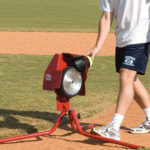Ask yourself the question again: “When buying golf equipment, which of price, fit or brand is the most important”. Whenever I ask any group this question, 4 out of the 5 will answer “fit” but a lot less than that have had their equipment fitted. And if I extend my query on ‘fitting’ to their Driver then the ratio is even worse.
What is it about the Driver that indicates it is a “one-size fits all” or a “follow the Pro on the TV” sort of club? Surely the club that gets us started, the one that has the longest shaft and the one that is most likely to put your ball out of play if miss-hit, is the one that needs more care and attention at the point of purchase.
Before we get to shaft type, strength or length. Before we wrap your hands around a grip to check why you hook every other tee-shot and even before we get out more weights than you’re likely to find at the local gym, let’s start with LOFT.
As long ago as 2003 Golf Digest published data from one of their robot tests to show that golf ball innovations had changed the rules and required us to think about playing with more Loft on our Drivers. And even before that, the ‘Long Drive Champions’ were sitting with stop watches to measure ‘hang-time’ (the amount of time the ball remained in the air). They had figured that the longer the ‘hang-time’ the further their Drive would go, which was counter to our 90’s ambition of low, long-running tee shots.
There is a very real physical relationship between the angle at which the ball leaves the club face, the swing speed of the club at impact, the golf ball that you use and the distance that you will get off the tee. It is a PGA Qualified Golf Professionals job to make sure that the ‘dimensions’ are working for you and NOT against you.
Before you take the information on the right and do a simple match, remember that we need ‘dynamic loft’. An 11







